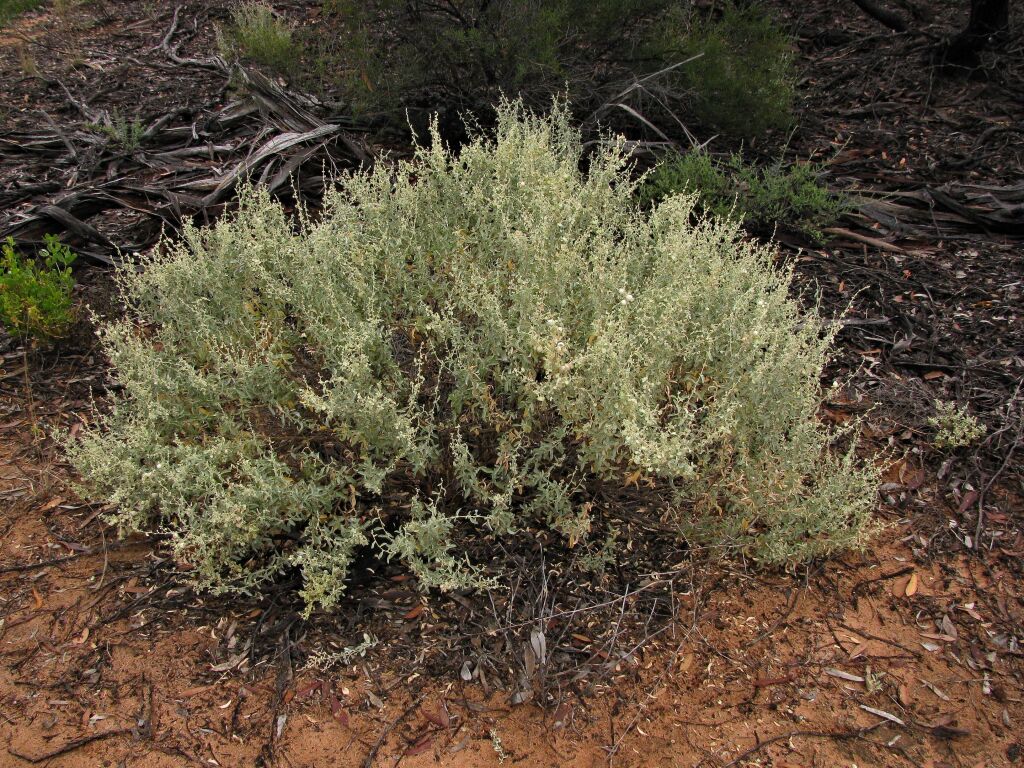Atriplex stipitata subsp. stipitata
Suberect or rather sprawling shrub, to c. 1 m high, dioecious. Leaves subsessile to shortly petiolate, ovate to obovate, mostly 10–30 mm long, 4–15 mm wide, with length-width ratio 1.5–2.5(–3), margins entire, sometimes incurved or conduplicate, surfaces glistening grey-green. Male plants with flowers densely clustered, forming spikes, sometimes interrupted or branched. Female plants with flowers clustered in axils or forming interrupted spikes. Fruiting bracteoles with stipe to 10 mm long, valves free, grey, reniform or cordate, to 7 mm long and 12 mm wide at maturity, thin, appressed, without appendages. Fruits mainly Oct.–Mar.
LoM, MuM, MSB, RobP. All mainland states. In Victoria uncommon to rare in the far north-west where usually occurring on sandy, limestone-rich soils in elevated, often disturbed sites. A few remarkably disjunct populations occur near Bacchus Marsh on shallow sedimentary and dry basaltic soils.
 Spinning
Spinning
